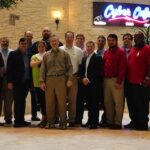|
|
This video is part of the appearance, “Dell Presents at Tech Field Day 9“. It was recorded as part of Tech Field Day 9 at 10:30-18:00 on June 19, 2013.
Watch on YouTube
Watch on Vimeo
Dell’s Active Infrastructure aims to redefine the data center by enabling IT agility, simplifying management, and improving operational efficiency through integrated systems and unified management. Presented at Tech Field Day 9, Dell outlines how their Active Infrastructure portfolio supports this vision via modular and converged approaches that cater to both greenfield and existing environments, emphasizing openness, automation, and end-to-end system design.
In the presentation, Dell outlined the driving challenges facing modern IT—lack of agility, fragmented systems, high operational expenses, and frequent downtime due to human error. These industry-wide issues, while widely acknowledged, are still unresolved at scale. Dell positions its Active Infrastructure portfolio as a response to these systemic inefficiencies, aiming to transform IT from being reactive and fragmented to being service-centric, agile, and a strategic enabler for business. The vision includes integrating hardware, software, and orchestration layers into a cohesive whole that allows IT to respond more rapidly and reliably to business requirements.
Dell’s approach is grounded in four tenets: openness, intuitiveness, automation, and a complete end-to-end solution that spans from data center to the client. The Active Infrastructure ecosystem includes pre-integrated systems called Active Systems, a unified orchestration and management tool called Active System Manager (ASM), and workload-optimized reference architectures. Notably, ASM automates complex provisioning tasks down to application-layer templates, not just infrastructure. Dell also emphasized the organizational and cultural hurdles—such as resistance to automation and role realignment—that impede IT transformation, arguing that top-down initiatives and tools designed for collaboration (e.g., role-based access and templating that bridges architects and engineers) are essential for meaningful change.
Personnel: Aaron Prince









